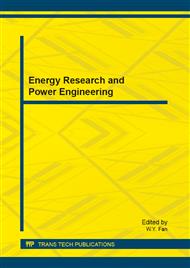p.1317
p.1326
p.1330
p.1334
p.1338
p.1342
p.1346
p.1351
p.1363
Sensitivity Analyses of Steam Generator Tube Thickness on Induced-SGTR in SBO Accident
Abstract:
For nuclear power plant, station black-out (SBO) is the events that contribute significantly to the level-I core damage risk. For an SBO, it is assumed that both the off-site power and on-site diesel generators fail to supply alternating-current power for the plant systems. SBO induced steam generator tube rupture (SGTR) is a concern because the steam generator (SG) tubes are parts of the reactor coolant pressure boundary and failure of the SG tubes may lead to fission products bypassing the containment. The SG tube integrity may be challenged by high temperature and high pressure conditions and may have a potential to fail due to creep rupture. This study focuses on the probability of SBO induced SGTR accidents under the station blackout (SBO) with RCS integrity, seal LOCA and steam relief valves remaining stuck open for the reference plant. At last, the sensitivity of the tube thick is studied.
Info:
Periodical:
Pages:
1338-1341
Citation:
Online since:
July 2013
Authors:
Price:
Сopyright:
© 2013 Trans Tech Publications Ltd. All Rights Reserved
Share:
Citation:


